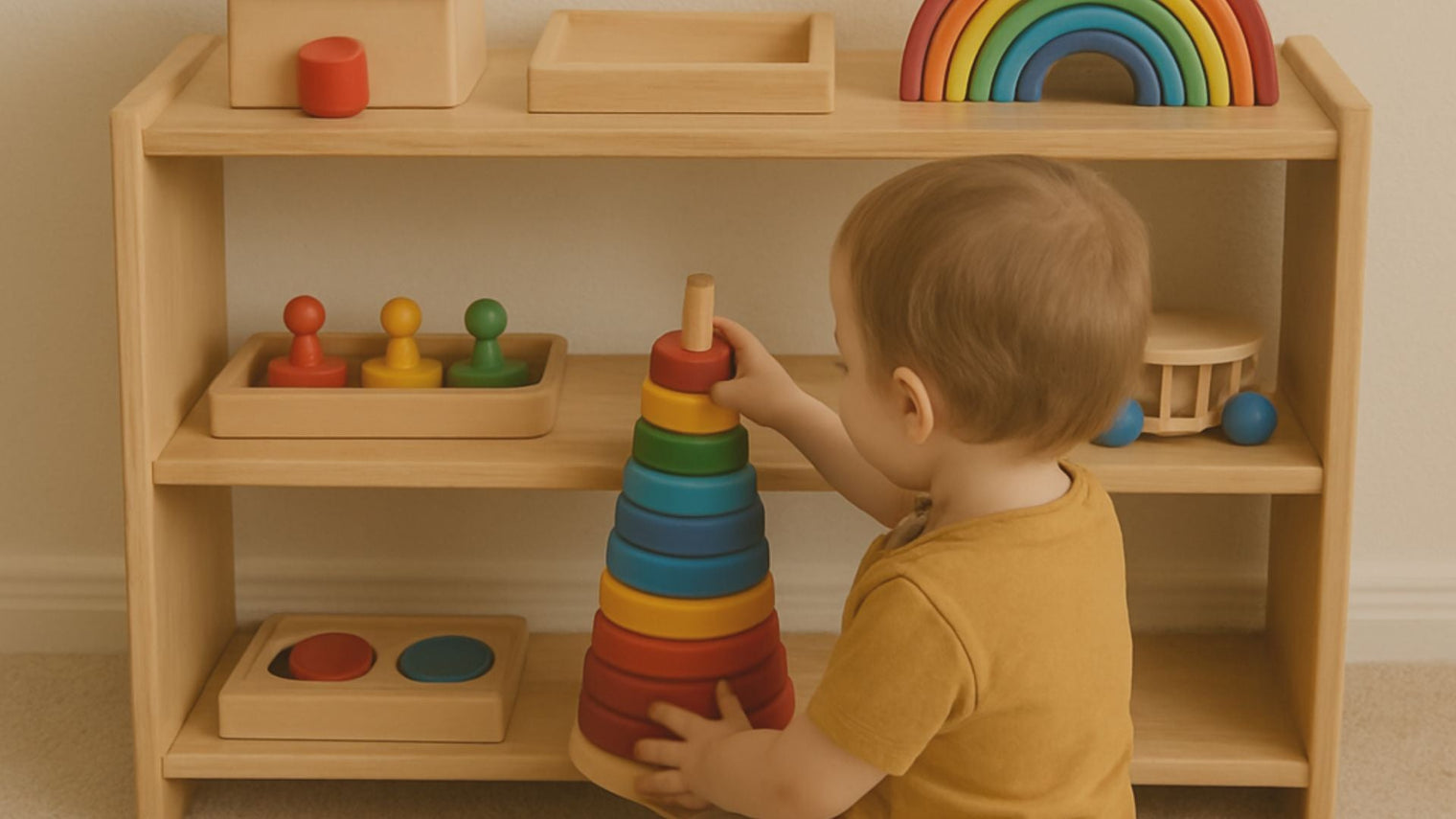When it comes to creating a child-friendly space at home, parents often face two main challenges: keeping toys organized and encouraging independent play.
Montessori-inspired play shelves have become a popular solution because they are simple, accessible, and encourage kids to explore at their own pace.
But what if you could take it a step further—building a Montessori play shelf that not only keeps toys beautifully displayed but also includes hidden storage compartments for those not-in-use items?
At Dannico Woodworks, we believe that children’s furniture should do more than just look good. It should inspire independence, help kids stay organized, and make life easier for parents.
In this guide, we’ll walk you through how to build a Montessori play shelf with hidden storage compartments—so your child’s play area is not only functional but also clutter-free.
Encouraging Independence
The Montessori method emphasizes self-directed learning. By having a play shelf that is at your child’s height, they can choose their own activities, fostering decision-making skills and independence.
This arrangement encourages children to tidy up after themselves, instilling a sense of responsibility.
Aesthetically Pleasing and Functional
A Montessori play shelf is not only functional but also adds a touch of elegance to your home.
The clean lines and natural materials often used in Montessori furniture blend seamlessly with various home decors, creating a serene environment for both children and adults.
Materials and Tools Needed
Before we begin, let’s gather the materials and tools you’ll need:
- Plywood or solid wood (pine, oak, or birch recommended)
- Wood glue
- Screws
- Sandpaper (medium and fine grit)
- Paint or wood stain (optional)
- Safety goggles and gloves
Tools:
- Saw (circular saw or hand saw)
- Drill
- Screwdriver
- Measuring tape
- Square
- Sander (optional)
Step-by-Step Guide to Building the Play Shelf
Step 1: Planning and Measuring

Creating a Blueprint
Draw a blueprint that includes the overall dimensions and the size of each component—shelves, sides, back, and hidden compartments. Ensure the shelves are spaced approximately 10-12 inches apart to accommodate various toys and books.
Step 2: Cutting the Wood
With your blueprint in hand, carefully measure and cut the wood to size. Make sure to wear safety goggles and gloves during this process.
Tips for Cutting
- Use a square to ensure your cuts are straight.
- Double-check measurements before cutting.
- Sand the edges of each piece after cutting to prevent splinters.
Step 3: Assembling the Frame
Begin by assembling the frame of the play shelf. Use wood glue and screws to attach the sides to the back panel. Ensure the structure is square using a carpenter’s square.
Step 4: Adding Shelves
Attach the shelves at your desired heights. Use screws to secure them in place, ensuring they are level and evenly spaced.
Hidden Storage Compartments
For hidden storage, consider installing a false back or a hinged panel at the bottom of the shelf. This can be a great place to store less frequently used toys or art supplies.
Step 5: Finishing Touches

Once assembled, sand the entire shelf to a smooth finish. If you wish, apply a coat of paint or wood stain. Ensure that any finishes are non-toxic and safe for children.
Safety First
Always check for sharp edges or protruding screws. The shelf should be sturdy and stable to prevent tipping. Consider anchoring it to the wall for added safety.
Incorporating the Shelf into Your Home
Setting Up a Montessori Home Environment
Position the play shelf in a space where your child spends a lot of time. Ensure it’s easily accessible and stocked with a selection of toys and activities that are rotated regularly to maintain interest.
Choosing the Right Toys
Select toys that encourage exploration and creativity. Montessori toys often include items like wooden blocks, puzzles, and art supplies. Arrange them neatly on the shelves, keeping the area clutter-free.
Benefits of Hidden Storage
Hidden storage compartments help maintain a tidy appearance while allowing quick access to additional toys. This feature is perfect for small spaces where organization is key.
Maintaining the Play Shelf
Regularly rotate the toys and activities on the shelf to keep the environment stimulating. Encourage your child to help with this process, reinforcing their sense of ownership and responsibility.
FAQs
What age is a Montessori play shelf suitable for?
Play shelves are ideal for toddlers (around 12 months and up) but can be used through preschool and early elementary years.
How many toys should I display at once?
Keep it simple. Around 6–8 toys at a time is plenty. Too many choices can overwhelm young children.
Can I buy one instead of building it?
Yes! At Dannico Woodworks, we specialize in creating Montessori-inspired furniture with thoughtful features like hidden storage.
If DIY isn’t for you, investing in a handcrafted shelf can save time while ensuring quality and safety.
How do I make sure the shelf is safe?
Always use rounded edges, secure the unit to the wall to prevent tipping, and choose non-toxic finishes.
Why add hidden storage instead of a separate toy box?
A dedicated toy box often ends up as a “catch-all.” Hidden storage within the shelf encourages better organization and supports Montessori principles of order and accessibility.
Final Thoughts
Building a Montessori play shelf with hidden storage compartments is more than just a DIY project—it’s an investment in your child’s independence, creativity, and sense of order.
By combining open display space with smart hidden storage, you create a clutter-free, engaging environment where play and learning naturally thrive.
At Dannico Woodworks, our mission is to design children’s furniture that is as functional as it is beautiful—pieces that help parents feel confident and give children the freedom to grow.
Would you try building your own Montessori play shelf, or would you rather invest in a handcrafted one made with expert care?

